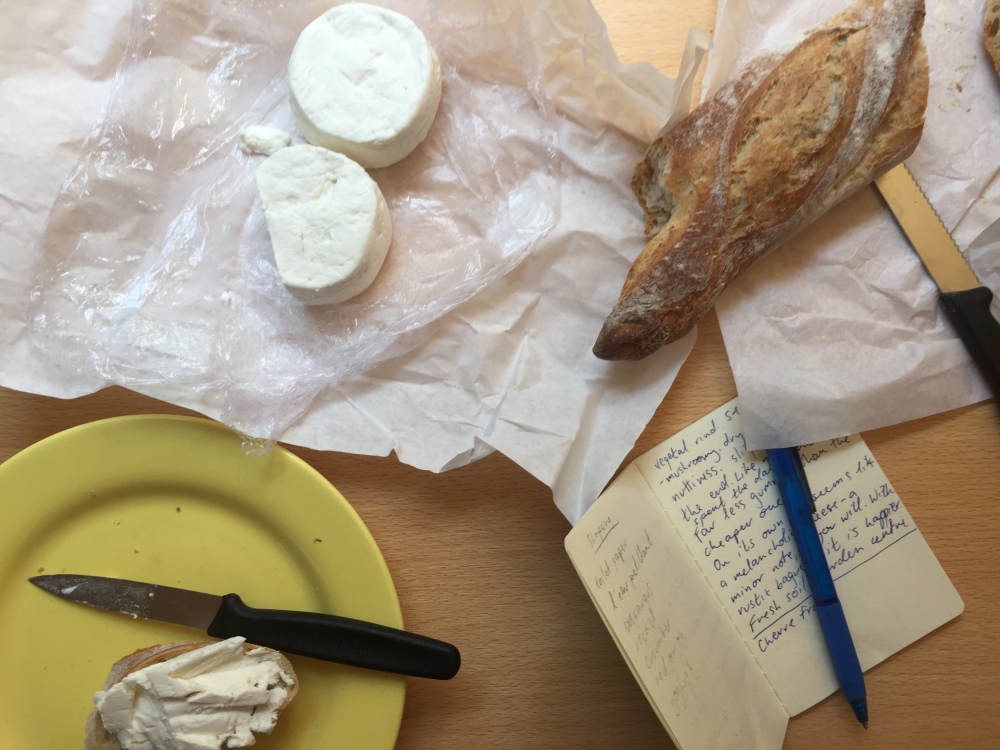
As you can probably imagine, the markets here in Lyon are quite something.
There are two within 15 minutes walk from my house. The first, the Marché St-Antoine, runs along the banks of the river Saône, while the second, the Marché Croix Rousse, sits high above the city in a well-to-do suburb called La Croix Rousse.
Both have their strengths, but the marché on top of the hill (in La Croix Rousse) edges out Saint-Antoine by virtue of its neighbourhoodiness. Come Saturday morning, the street is crowded with sophisticated locals toting, um, totes, and jostling each other to get the best aubergines, or the choicest cut of beef.
The market’s wares are diverse. There are stalls selling fruit, vegetables, olives, spices, cheese, meat (both raw and cured), bread, pastries and eggs. On Saturdays and Sundays, it stretches for a good 500m along the road, and offers up some prime people-watching opportunities.
I have partaken enthusiastically in the market’s bountiful wares. Last weekend I came away with fresh mint and coriander, broad beans, courgettes, peppers, a weirdly forked baguette, and a couple of lumps of fresh chèvre. Et voila, a post was born.
Chèvre literally means goat in French, and, if you hadn’t already surmised, it is made from goats milk. Like most other cheeses, the amount of variation between specimens is vast, and there are a range of different AOC labels for goats milk cheeses made around France, including Picodon and Saint-Maure de Touraine.
The chèvre I picked up at the market was the Vin de Table of chèvres – a simple eating cheese. They were stacked lengthways in little discs behind a perspex barrier, ranging from pure, glistening white discs to mottled, grey hockey pucks, giving clues to their respective ages. I picked the youngest cheese, hoping to inject some youthful vivre into my world-weary visage.
The cheese was not really what I expected. It was quite different to the chèvre I used to buy by accident every time I went to Farro – it wasn’t that this cheese was superior to its kiwi counterpart (unlike many of its compatriots), it was more that this cheese was lighter and closer in flavour to a cottage cheese (although the soft, creamy texture was the same as the chèvre at home). The trademark acidity was still there, however – there was no mistaking this for a cows milk cheese.
I smeared it on baguette for my lunch. It was nice, if a touch unremarkable – it had a kind of creamy, chalky texture with the distinct flavor of fresh milk and a hint of dried herbs. After a few nibbles, I had what would prove to be one of my greatest ideas ever – I would dot the fresh raspberries I had also bought at the market on the chèvre.
Sweetness is fine, sure, but for me, a berry’s strength lies in its aroma. The raspberries’ aroma permeated every mouthful of the chèvre in such a way that it elevated my lunch to something that was considerably more than the sum of its parts.
Pairing cheese and fruit is not anything new (Wensleydale with cranberries, anyone) but for some reason, finding a new pairing of the two feels like a grand accomplishment. There’s nothing like pairing a grape with your roquefort, or a slice of apple with your cheddar to make you believe you are the greatest genius who ever walked this earth.
Type of cheese: Chèvre
Eaten with: Raspberries, baguette
Score: 7 out of 10 laughing cows